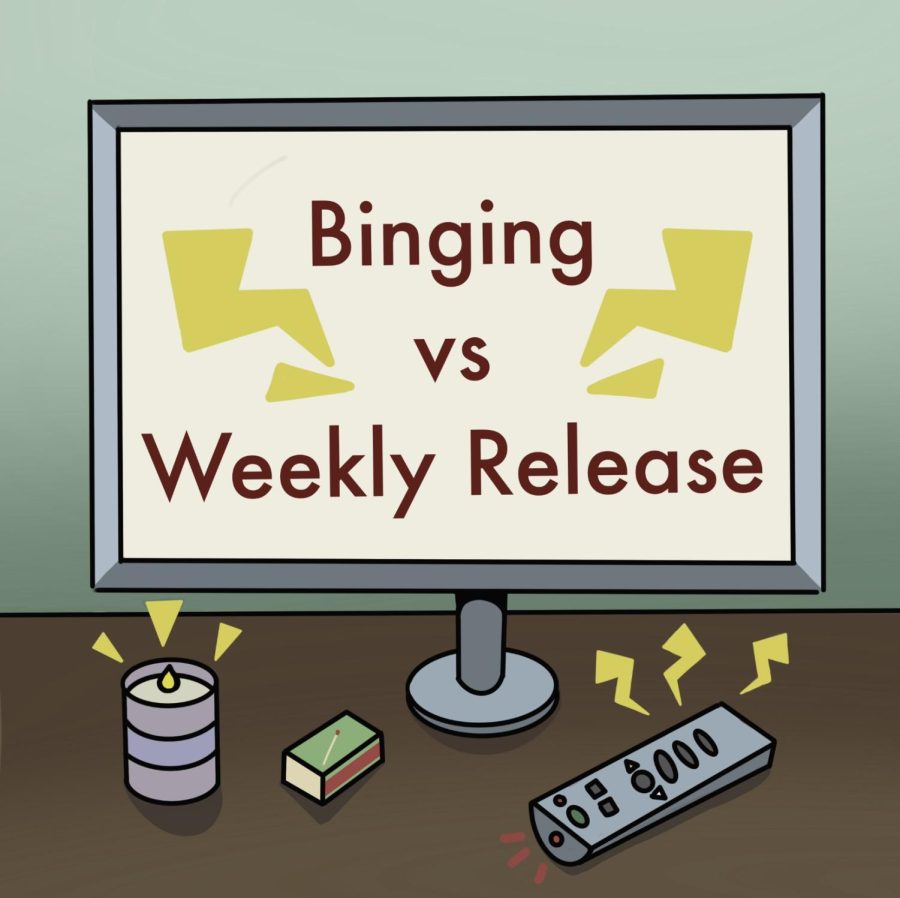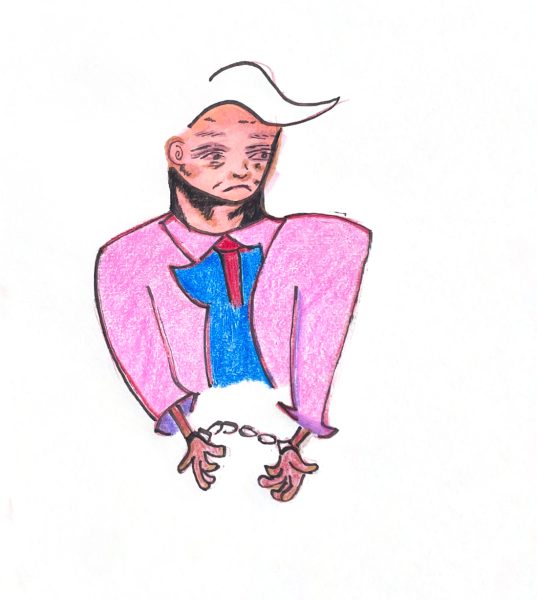Binge-watching vs. weekly release
April 11, 2023
Sitting back and getting lost in your favorite TV shows is one of the best pastimes. When it comes to watching your preferred series, what is better, binging through a whole season in one night or waiting every week to find out what happens next? Audiences have debated this question for quite some time, especially since the release of hit shows such as “Euphoria” and “The Last of Us,” which follow a weekly-rollout model. Many argue that binge-watching shows is more enjoyable and engaging, while others say that shows that follow a weekly schedule are better because they allow for more fan engagement.
The last two years have been big for TV show talk on social media. At the beginning of this year, HBO Max released “The Last of Us,” a live-action TV show adaptation of the 2013 Game of the Year award winner. Talk of the show has flooded social media, with a great number of posts, tweets and edits of the show crowding people’s screens. Even if you did not tune in every Sunday to watch the story unfold, it is likely that you heard talk of the protagonist Ellie, or the charming lead actor, Pedro Pascal. “The Last of Us” had audiences hooked, and the weekly rollout schedule allowed for fans to debrief and analyze episodes while talking about what came next. The social media engagement was exciting and entertaining for many and waiting one week to follow the story was a good thing — it was something to look forward to; even the fans who played the original video game were able to enjoy conversations of the show and have something to look forward to.
In contrast to this, there was also a great deal of social media talk last year about the Netflix original “Wednesday,” which released its first season in one day. Releasing an entire season in one day allowed many to binge-watch the show, then take their conversations to social media. Although the series gathered abundant attention and love from millions, short shows that release a whole season in one day are more likely to leave fans asking, “Now what?” It becomes so easy to get hooked on a show and let episode after episode play, allowing the time to fly. “Wednesday” was a top show in 2022, sitting at number two for the most streamed original series, with 18.6 billion minutes viewed. However, talk of the show did not last — the engagement, the fan theories, the excitement for the next season, all wore off quickly. It followed the path of most Netflix originals: it became the “it-show,” for a bit then conversation about it dissipated, with talk of a new season gone fast because audiences knew they would have to wait a long time for it. Overindulging in a series so quickly is nice, but only temporarily, and while it leaves fans longing for more, they grow impatient and eventually bored, allowing them to quickly forget and move onto the next big thing.
It is tricky to find a sweet spot, one where fans can enjoy talk of the show while also indulging in a nice binge-watching session. In the summer of 2022, fans got lost in a show that had the perfect balance — a two-part streaming release model. “Stranger Things” released its fourth season, and this show was the talk of the summer and the show of the year, sitting at number one for the most streamed show overall in 2022 with 52 billion minutes viewed. The show released season four in two parts and this release model allowed fans to binge-watch the series, which was an intoxicatingly enjoyable thing to do, while also engaging on social media about theories regarding part two of the season. Audiences did not hold back when it came to posting about the show; theories, fan edits and analyses took over social media when the new season hit the screen. Fans were enraptured by the show, and it was extremely popular for months. The sweet spot was found — a streaming release model that kept social media engagement on top while also allowing fans to binge-watch.
It all comes down to preference; however, many find that fan engagement creates more excitement, and this is something audiences find in weekly rollout models. On the other hand, some fans love to binge-watch; they love to sit at home and get lost in their screen for a night, staying ahead of spoilers and watching their favorite characters nonstop. However, a good balance is found in shows that release their shows in two parts, a bit of binge-watching, and a bit of fan engagement and after all, what could be better than balance?













